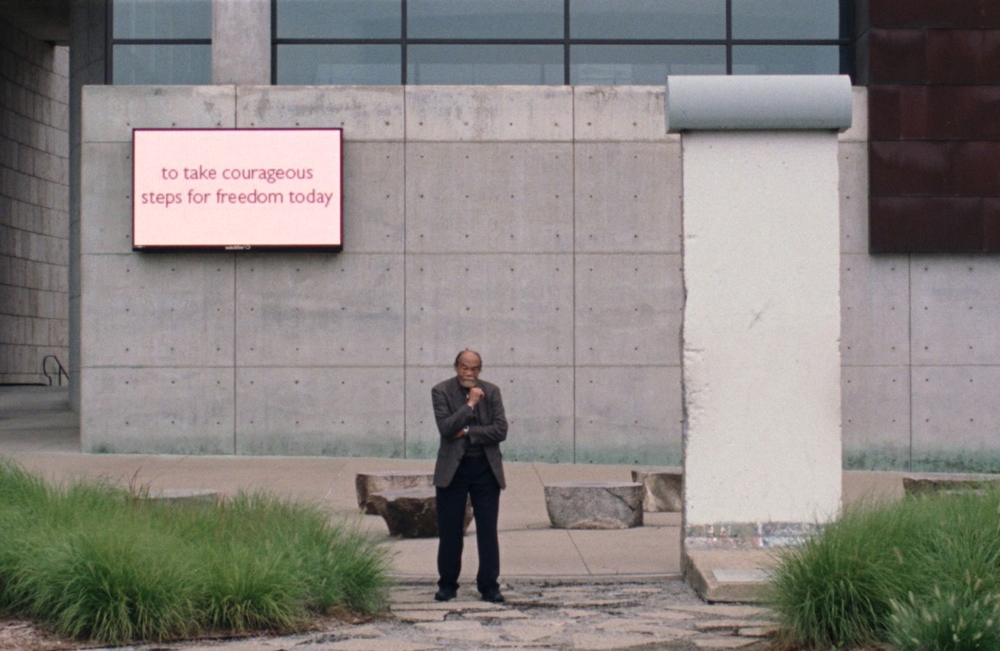“In order to portray an abstract idea like freedom, you have to have unfreedom,” Edwina Sands explains in “The American Sector,” standing at a sculpture she created for the Franklin Delano Roosevelt Presidential Museum and Library in Hyde Park, New York, putting a man and woman that she fashioned out of remnants of the Berlin Wall in between busts of FDR and Winston Churchill, who as it happens was her grandfather. As she describes how the piece of the former border between East and West Germany was crucial in illustrating this tension, you realize she didn’t need to even say anything to answer the question at the heart of Courtney Stephens and Pacho Velez’s provocative and fascinating film as the repurposed concrete slab may have one undeniable meaning as a literal piece of history but is open to many, many others as the context around it changes.
This can be seen at any location that Stephens and Velez make a stop in their travels to 60-plus sites across America where significant chunks of the Berlin Wall have ended up, randomly in some cases as in front of the Friends Suwannee Grill in Georgia after the proprietor took advantage of a government-run auction liquidating the assets of someone convicted of fraud, thinking it would make for a cool welcome, and less so at CIA Headquarters, where even the lowly bureaucrat charged with granting permission to film can go into how the marker of the end of the Cold War reshaped the entire agency. Reminiscent of Brett Story’s beguiling, free-floating contemplation of climate change through one summer in New York “The Hottest August,” the filmmakers find a way to enliven images that would go unquestioned to take on extraordinary depth, opening up conversations with people within some proximity to the wall of what the artifact means to them.
While some, such as ex-military, see the broken wall as a symbol of what they fought for, others have more complicated reactions, whether it’s University of Virginia students who, a generation removed from the fall of the wall, wonder whether the monument on their own campus is physically denying the recognition of the more significant history of slavery or a Ukrainian woman in Hope Point, Idaho who dutifully washes the piece of the wall that sits at the entry of a gated community, though she admits for all the freedoms that came with the wall’s collapse, it was “very hard to adjust” to the reality of a society that had to be rebuilt from scratch.
Unspoken but rising to the fore in “The American Sector” is the notion that there are far stronger barriers that exist today that are less obvious than the Berlin Wall ever was, and while Stephens and Velez naturally visit a number of public spaces, the trips to private places such as the headquarters of Microsoft and a Laurel Canyon mansion above the Sunset Strip where the wall is presented as art and commodified as a form of expression of either corporate values or personal aspiration, start to stand out, suggesting not only the frightening possibility that collective memory can be privatized, eventually leading only but a wealthy few to literally afford to remember it, but that it will be increasingly bent to fortifying narratives that selectively leaves other facts out. For this reason alone, “The American Sector” proves invaluable, but as much as it can be appreciated as an act of historical preservation, it is more impressive in putting together the pieces of a fragmented culture to speak to our future.
“The American Sector” will screen at the Berlin Film Festival on February 22nd at 8 pm at International and February 24th at 3:15 pm at Cubix 6.




